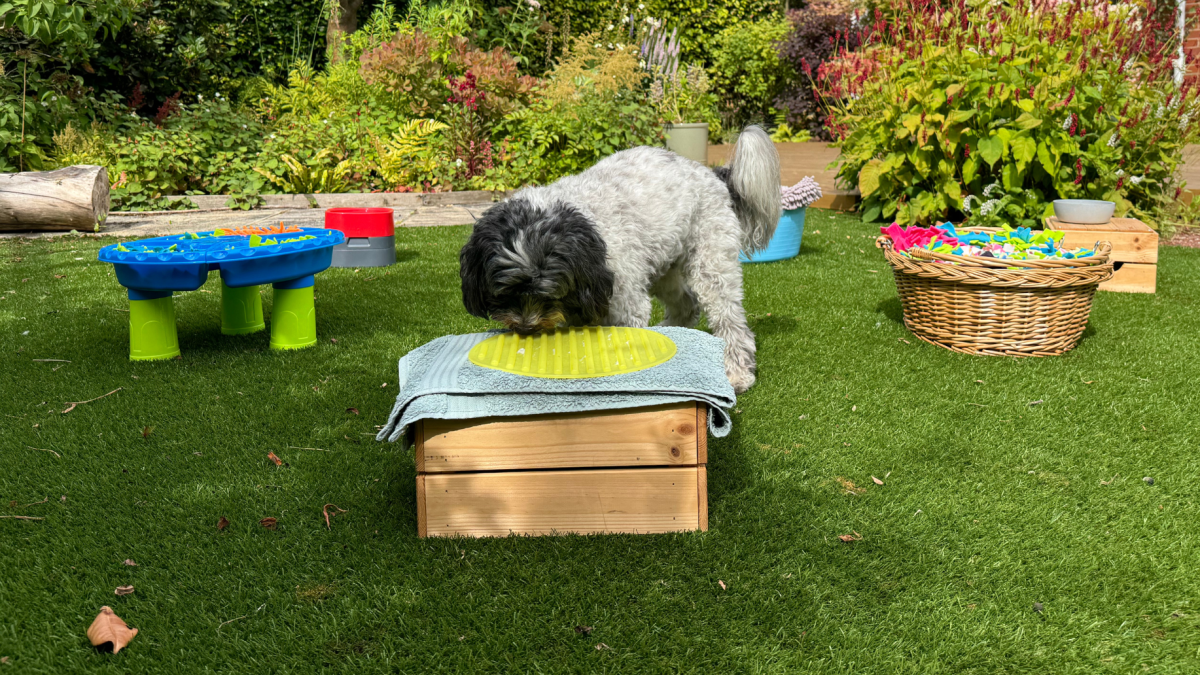Supporting Dogs and Guardians: The Magic of ACE Free Work

The majority of my behavioural work focuses on supporting guardians whose dogs are experiencing fear, anxiety, and frustration. These emotions can have a profound impact on a dog’s health and well-being, but the effects don’t stop there—they extend to the human end of the lead as well. Guardians often feel stressed, worried, or even guilty as they try to manage their dog’s emotional struggles. This is why I’m so passionate about supporting both the dog and the guardian, helping them build the best life possible together.
.
ACE Free Work
.
One of the key components of my behaviour plans is ACE Free Work, created by the amazing Sarah Fisher. I believe Free Work to be one of the most effective ways to support both dogs and their guardians. Its emphasis on observation, freedom of choice, sensory education, NATO (No Attachment to Outcome) approach, and rewarding education aligns perfectly with my commitment to providing kind, ethical, and compassionate support. I find this approach enables guardians and their dogs to experience more fulfilling lives together.
.

.
Incorporating ACE Free Work into my behaviour plans enables me to understand and support each dog on a much deeper level. Free Work also helps guardians learn and discover more about their dogs, which can be illuminating for them. By building trust, connection, and deeper conversations, both dogs and their guardians can experience richer and more rewarding lives together.
.
Versatility of ACE Free Work
.
ACE Free Work is incredibly versatile, allowing me to use it in various ways to help and support dogs. Here are a few ways I use ACE Free Work:
.
- Connection and engagement
- Teaching important lifeskills, for example, loose lead walking, settle, recall and drop
- Decompressing and resetting after a stressful or frustrating experience
- Frustration & self-regulation
- Resource guarding
- Body contact for touch sensitive dogs
- Cooperative care
- Building confidence
- Car and vehicle travel
- Creating calm
- Introducing people and animals (if appropriate)
- Supporting dogs with fears, anxieties, or phobias
- Separation related behaviours
- Introducing equipment
- Reducing stress
- Noise sensitivities
- Introducing visitors if appropriate
.

.
What is ACE Free Work?
Describing what ACE Free Work is can be challenging because it encompasses so much and it’s continually evolving with new layers being added all the time. However, put very simply, Free Work is an enriching, low-impact activity that is rewarding for dogs and illuminating for the guardian. It’s suitable for all dogs, regardless of their age, breed, or background, and can be enjoyed even in the smallest of spaces, ensuring it is accessible to all dogs.
.
Free Work uses ‘stations’ to create a setup for the dog to explore.
Each Free Work session is tailored to the individual dog, ensuring a safe and rewarding experience. During a Free Work session, the dog is free to move around the environment and explore different stations. They are completely free to make their own choices, we don’t lure them or encourage them to engage with anything specific. These stations might include various surfaces, objects, and activities like licking, foraging, and sniffing.
.

.
Getting Started with ACE Free Work
Create 3 or 4 stations: Create 3 to 4 stations, or less if needed, each providing an opportunity to snuffle, forage, or lick.
Vary Heights: Include different heights and angled platforms using items like upturned tubs, containers, low stools, and sturdy boxes. Ensure that all surfaces are stable and avoid using anything that requires the dog to step on or over in the early stages.
Ensure Safety: Avoid slippery surfaces; use rugs or mats as needed to create a safe environment for exploration.
Incorporate a Variety of Foods: If suitable, provide a selection of foods, such as paste, flavoured water, large chews, small treats, and both soft and crunchy options, to create a multiple of sensory experiences.
Provide Water: Include two bowls of water within the Free Work setup.
Include Toys: Add a selection of toys.
Remove Equipment (if safe): If safe to do so, remove the dog’s equipment.
Invite Exploration: Invite the dog to explore their stations at their own pace, providing support if needed.
.
The Importance of ACE Observations
Observations are one of the most important aspects of ACE. As your dog explores and enjoys their Free Work, you get to sit back and observe, gaining valuable insights into their behaviour, preferences, patterns, posture, movements, and potential problems that may need further investigation. Watching how your dog interacts with different stations and activities provides valuable information, helping you tailor future sessions.
.
Discover More About ACE Free Work
If you are interested in learning more about ACE Free Work you might like to take a look at my Introduction to ACE Free Work course or the Confident Canine Hub where you will find everything you need to start your ACE Free Work adventure today. Additionally, you can visit Tilly Farm for more information about ACE and ACE Free Work.
 Sonia Catherall
Sonia Catherall 